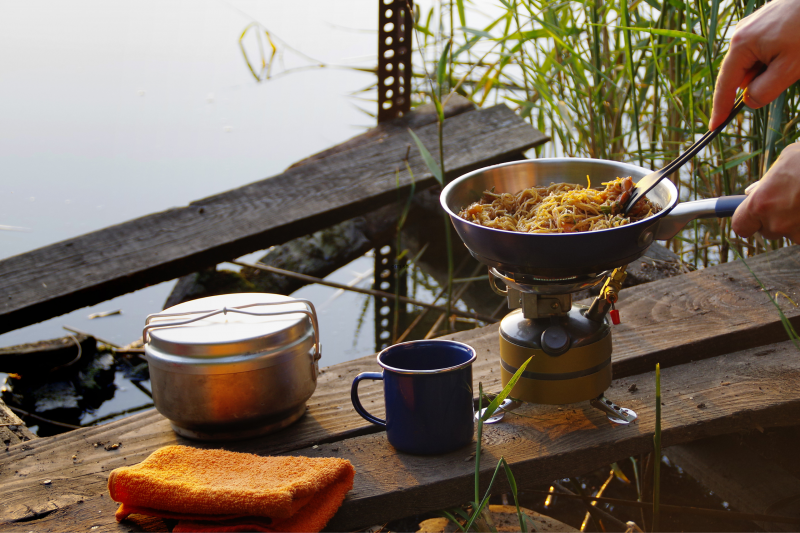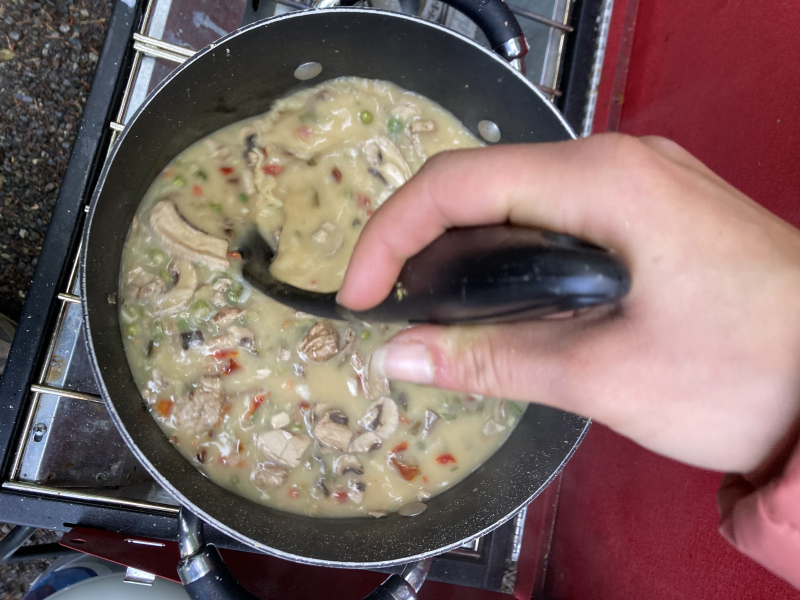Tips for Meal Prepping Before You Hit the Trail
Need some tips on the basics of prepping meals for a successful overnight trip? AHS Intern, Caitlin, is sharing her tips, and a delicious recipe to power your next adventure, too!

When spending time outside, fueling your trip with calorie-dense snacks and meals is incredibly important. Food is one of the 10 essentials and can make or break a hiking excursion. Just like you would meal prep for your day-to-day life, it’s also helpful to meal prep for the trail.
What are some important things to keep in mind?
When packing food for a hiking trip, it’s helpful to think about how much energy you will be expelling and just how much you’ll need to refuel so you can keep your energy levels sustained throughout your time on the trail.
It’s also important to remember that to refuel, you’ll have to carry food in your pack, so keep that in mind when determining what kind of meals and/or snacks you’ll want! Heavy items = more weight on your back and in your pack.
Hiking is a physically demanding activity, and you need to replenish your energy stores with calories!
Depending on the intensity of activity and personal health metrics, each person should plan to pack between 2,500 to 4,500 calories of food per day plus an extra supply in case of emergency.
What kind of meals and snacks are best?
Choose calorie-rich snacks and dehydrated meals to prepare enough food without weighing down your backpack.
To encourage yourself to fuel up throughout the day, consider packing your favorite treats as a delicious boost, and even incorporate a few fresh ingredients for an extra flavor pack when needed!
If you are packing foods that require being rehydrated or heated up, remember to carry your stove, fuel, a lighter, and enough water for your backcountry meal. *This is an important element to remember regarding added weight to your pack, too! It’s never a bad idea to fully pack your backpack and take it for a test spin to gauge its weight and your comfort with it before heading out for a long day on the trail.
Once you have determined the duration of your trip, intensity level, gear requirements, and caloric needs, the fun of meal-prepping begins!
Some might argue that food tastes better on the trail or when cooked in the backcountry because it’s such a special experience. With modern food technology, hiking food can be tasty, filling, and incredibly satisfying.
Start with a list.
For every day you will be on the trail, write out what you will have for breakfast, lunch, dinner, and snacks. As you’re planning out your backpacking meals, think about what you like to eat at home. Stick to food groups that you eat regularly and will enjoy at the end of a long day outside.
Consider how you can adapt your favorite meals to the backcountry.
You can find various meals in dehydrated, ready-to-go packages at outdoor stores. However, if you want to challenge yourself or simply want to ensure that you’re meeting your personal dietary needs (and catering to your flavor preferences!), consider building your own meal kits!
It’s not as hard as it sounds! For a backpacking dinner, a basic recipe should combine a quick-cooking carb with a dehydrated protein. Powdered milk, spices, and dehydrated veggies are great ways to add flavor to a meal without weighing down your pack.
To inspire your backcountry cooking, here’s a delicious recipe that can be easily adapted to meet dietary needs.

Coconut curry noodles
Makes 2 servings
Ingredients:
1 cup of quick-cooking noodles (rice, wheat)
¼ cup of dehydrated tofu or meat
4 tbsp of coconut milk powder
¼ cup of dehydrated veggies (recommended mix: mushrooms, carrots, broccoli)
Spice mix:
1 tbsp curry powder
¼ tsp ginger, paprika, cumin, garlic powder
1 bouillon cube (veggie or meat)
1 True Lime packet
Optional add-ins:
Soy sauce packets
Peanut butter to taste
Fresh green onion or red bell pepper
Directions:
Add all the ingredients except for the spice mix to a pot. Cover and let soak for 5 minutes, then bring to a boil. Boil for two minutes. Mix in spices, let cool, and enjoy!

